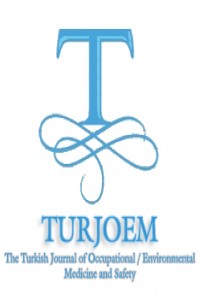Öz
Kaynakça
- Duzce University School of Medicine, Department of Emergency Medicine.
Öz
In recent years, use of synthetic cannabinoids has
been frequently observed in population. There are many articles about the
history, type and pharmaco-chemical properties of synthetic cannabinoids in the
literature; however the number of articles about the frequency of their
detection is limited. Because drug abuse is modern disaster of populations,
requirement of definition of risk groups occurred, and we tried to define the
risk population in our city.
The reports of Duzce University Hospital were
retrospectively reviewed. Scan of laboratory codes‘’ bonzai drug level’’ was performed. Positive reports
for presence of synthetic cannabinoids ‘’bonzai’’ in urine were investigated.
Demographic features as number of patients, gender, mean of age and seasonal
distribution were determined.
During 4 year period through 2012-2015, 5374 patients
were evaluated for bonsai use suspicion. Of totally 335 patients with urine
bonsai detected positive (UBDP), 58 were under 18 years old (%17.31). The average age of UBDP patients was 25
(14-60 years). The average age of UBDP patients was 33, 31, 26 and 25 for each
year through 2012-2015 respectively. Male majority was detected; 56 male and 2
females were under 18 years old, and 270 male and 7 females were over 18 years
old.
The number and diversity of bonsai use have increased
significantly in the drug market in recent years. This has led to more
widespread and younger population use of the drug, which we can dramatically
observe referring to the records.
Anahtar Kelimeler
. DETECTION FREQUENCY OF SYNTHETIC CANNABINOIDS ‘’BONZAI’’ IN URINE
Kaynakça
- Duzce University School of Medicine, Department of Emergency Medicine.
Ayrıntılar
| Bölüm | Articles |
|---|---|
| Yazarlar | |
| Yayımlanma Tarihi | 16 Şubat 2017 |
| Yayımlandığı Sayı | Yıl 2017 Cilt: Volume 2 Sayı: İssue 1 (1) - 2.İnternational Congress Of Forensic Toxicology |


